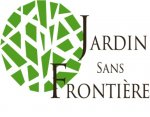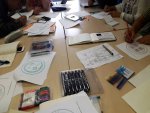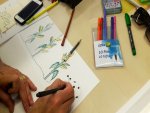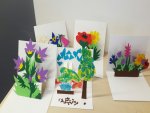accueil site > 45. Archives > Paysage et patrimoine > 12. Pedagogic tools > 17. Pedagogic tools > 092. 12 - A garden to learn - Transversal approach to the garden
-
45. Archives
-
Paysage et patrimoine
-
01. Fiches pédagogiques
Disciplines
-
01. Teaching materials
Disciplines
-
02. Jardin sans frontière : une école pour développer les compétences -clés en Europe
- 04. Partenaires
- 05. Rencontres transnationales
- 14. À l’école du jardin. Mobilités de formation dans les jardins d’Europe
- 15. À l’école européenne du jardin. Paroles de formateurs sur leurs formations "entre pairs"
- 16. A l’école auropéenne du jardin. Paroles d’apprenants sur leurs mobilités Erasmus+
- 19. Petit glossaire "européen" du jardin
- 20. Dissémination
- 21. Exploitation locale du projet
- 03. Un nouvel Erasmus+ : Le bleu européen comme étendard contre l’exclusion des adultes
-
09. Erasmus+ partenariato
-
Cammini del Blu in Europa
- 01. Incontri transnazionali
- 05. Progetti blu di partners
- 10. Percorsi europei del Blu
- 20. Storie blu
- 40. Disseminazione
- 43. Transcultural Carpet Blue
- 45. Missive blu
- 46. Glossario blu
- 47. Schede didattiche "Pedagogia del colore blu in Europa"
- 48. Illustrazioni delle schede didattiche : Mostra delle opere degli studenti
-
Giardino senza frontiere. Una scuola per lo slivuppo di competenze chiave in Europa
- 04. Partners
- 05. Riunioni transnazionali
- 14. Alla scuola del giardino. Mobilità di formazione nei giardini d’Europa
- 15. Alla scuola del Giardino. Parole di formatori sul loro addestramento "tra pari"
- 16. Alla scuola del giardino. Parole dei discenti sul loro Erasmus + Mobilità
- 19. Piccolo glossario europeo del giardino
-
Cammini del Blu in Europa
-
11. Erasmus+ Partnership
- 01. Transnational Meetings
- 05. Blue Projects of partners
- 07. European roads of the Blue
- 10. Blue stories
- 40. Dissemination
- 43. Transcultural Carpet Blue
- 45. Blue Missives
- 46. Blue Glossary
- 48. Roads of the blue : the file
- 50. Illustrations of the pedagogic file : exhibition of works of learners
-
51. Garden Without Borders : A School for Developing Key Competences in Europe
- 04. Partners
- 05. Transnational meetings
- 14. At Garden School. Training mobilities in the gardens of Europe
- 15. At Garden School. Words of trainers on their "peer-to-peer" training
- 16. At Garden School. Learners’ words about their mobility Erasmus +
- 19. Small European glossary of the garden
- 20. Dissemination
-
11. Partenariats Erasmus+
-
01. Les chemins du bleu en Europe
- 01. Rencontres transnationales
- 05. Projets bleus des partenaires
- 10. Routes du Bleu en Europe ...
- 20. Histoires Bleues
- 40. Dissémination
- 43. Transcultural Carpet Blue
- 45. Missives bleues
- 46. Glossaire bleu
- 47. Formation pédagogique : fiches pédagogiques et référentiel de compétences clés et transversales
- 50. Illustrations des fiches pédagogiques : exposition des travaux des apprenants
-
01. Les chemins du bleu en Europe
- 12. Pedagogic tools
- 17. Fiches pédagogiques
- 17. Schede Pedagogiche
-
01. Fiches pédagogiques
- 05. Livre d’or des formations
- 07. Livre d’or des formations Comenius - Grundtvig
- 10. National
- 20. International
-
Paysage et patrimoine
092. 12 - A garden to learn - Transversal approach to the garden vendredi 7 septembre 2018
PROJECT
Application of a methodology based on five modules to develop transversal and key competences in the fields of sciences, literature and culture addressed to learners with difficulties through the theme of the garden exploited as a crossroads of all disciplines.
PUBLIC
This methodology was experimented by the European teachers in a peer-to-peer training mobility in the gardens of Saint-Germain-en-Laye from 4 to 8 June 2018.
Similarly, it was performed with the weak students of the schools of Trieste at the Botanical Garden of Padua
KEY COMPETENCES
![]() Communication in the mother tongue
Communication in the mother tongue
![]() Scientific and mathematical competences
Scientific and mathematical competences
![]() Learning to learn
Learning to learn
![]() Humanist culture and expression of sensitivity
Humanist culture and expression of sensitivity
OBJECTIVES
To rely on the transversality of the subjects related to the garden, the crossroads of many disciplines, as vehicle of motivation to develop the key competences of the learners
GARDENS EXPLORED
The gardens of the Domaine National of Saint-Germain-en-Laye, France, particularly the garden created by André Le Notre
The Botanical Garden of Padua.
MATERIALS
![]() Paper, colours, notebooks, scissors, glue, etc.
Paper, colours, notebooks, scissors, glue, etc.
![]() Laptop
Laptop
![]() Map of the garden
Map of the garden
![]() The « Little glossary of garden » realized by the partnership in the mother and foreign tongue
The « Little glossary of garden » realized by the partnership in the mother and foreign tongue
DEVELOPMENT
Module1. Observation and identification of the geometrical forms in a garden
The on site-activity is completed in the classroom with the analysis of the plans and aerial photos of the gardens retrievable online photographies aériennes des jardins consultables en ligne
The analysis allows for the acquisition and identification through the colours of the geometrical figures in the plan of the garden : squares, triangles, circles. _ This activity leads to and conveys the definition of the sizes of the flowerbeds : length of edges and paths, calculation of the angles, use of the scale. All the data taken on site or on the plan are reported in a ’garden notebook’
Module 2. Workshop of writing in the garden starting from the sensory approach
To write words, phrases, short paragraphs using the « Petit glossaire européen du jardin » drafted by the partnership.
Reading of texts on site. Here the garden is a vehicle of inspiration to speaking and writing. The ’language of plants’ stimulated by the sensations expands with the names of known or imaginary plants. Each portrait of a plant is described in a personal, creative way in a text, with photos and visual arts.
The activity is extended by the drafting of ’short stories of plants through the seasons’
Module 3. Workshop of Postal Art
The Erasmus+ training mobility in Saint-Germain-en-Laye of Portuguese, Spanish and Italian teachers was the occasion to motivate a playful situation of communication and of cultural enrichment represented by a workshop of Postal Art
![]() To discover and grasp the scope of Postal Art through the examples of famous artists
To discover and grasp the scope of Postal Art through the examples of famous artists
![]() To exchange with colleagues and friends your personal vision of the French garden on a postal card travelling through Europe embodied on the envelope by an artistic writing, a collage, a drawing, a painting … Voir La fiche pédagogique Mailing Art at Garden
To exchange with colleagues and friends your personal vision of the French garden on a postal card travelling through Europe embodied on the envelope by an artistic writing, a collage, a drawing, a painting … Voir La fiche pédagogique Mailing Art at Garden
EXTENSION
Other modules are suggested based on the garden
Module 4. Learning of a modern language
Creation of short texts, stories, poems, comics by using the "Small European glossary of the garden" elaborated in the partnership
Module 5. Activities of plantation, calendar of seeding and collection according to the season
EVALUATION
It takes into account the ability to :
Master the oral and written communication in the mother and a foreign tongue
![]() To strengthen the ability to read, write, communicate : describe and report using an adequate vocabulary
To strengthen the ability to read, write, communicate : describe and report using an adequate vocabulary
![]() To be able to present your work and support your choices
To be able to present your work and support your choices
![]() To reinforce the ability to comprehend a foreign language both orally and in writing , to utilize "Small European glossary of the garden" elaborated in the partnership
To reinforce the ability to comprehend a foreign language both orally and in writing , to utilize "Small European glossary of the garden" elaborated in the partnership
Develop mathematical competences
![]() To find and identify geometrical forms
To find and identify geometrical forms
![]() To read and interpret plans of gardens, their captions and their scale
To read and interpret plans of gardens, their captions and their scale
![]() To calculate areas, lengths using the rules of conversion of the units of measurement.
To calculate areas, lengths using the rules of conversion of the units of measurement.
Develop technological competences To learn how to use software to create a text To research on the Web following the instructions To present a short work complete with text and images
Express sensitivity and enrich the artistic culture
![]() To to know the scope of the Postal Art through the examples of famous artists
To to know the scope of the Postal Art through the examples of famous artists
![]() To develop your artistic expression by employing different tools : painting, drawing, collage, graphic arts..
To develop your artistic expression by employing different tools : painting, drawing, collage, graphic arts..
![]() To communicate on the garden object of study through images, colours, drawings, texts
To communicate on the garden object of study through images, colours, drawings, texts
Develop social and civic competences
![]() To be able to work in group, share ideas and opinions
To be able to work in group, share ideas and opinions
![]() To cooperate in a group respecting the subdivision of tasks
To cooperate in a group respecting the subdivision of tasks
![]() To assess the operational dynamics of each student and of the group during the different phases of the activity
To assess the operational dynamics of each student and of the group during the different phases of the activity
Learn to learn To give account of a coherent organization of thoughts and ideas. Learn to observe, collect information, take notes, summarize, memorise through drawings
AUTHORS
Mary Gino
Association Acquamarina, Trieste, Italie
TRANSLATER
Mary Gino
Association Acquamarina, Trieste, Italie
PHOTOS Giuliana Corbatto Acquamarina Associazione Culturale Trieste, Italy















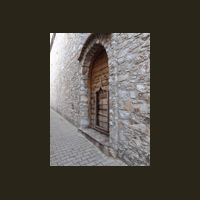
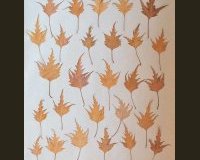
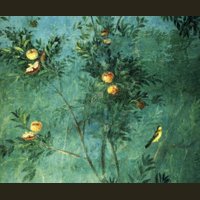
 Version imprimable
Version imprimable